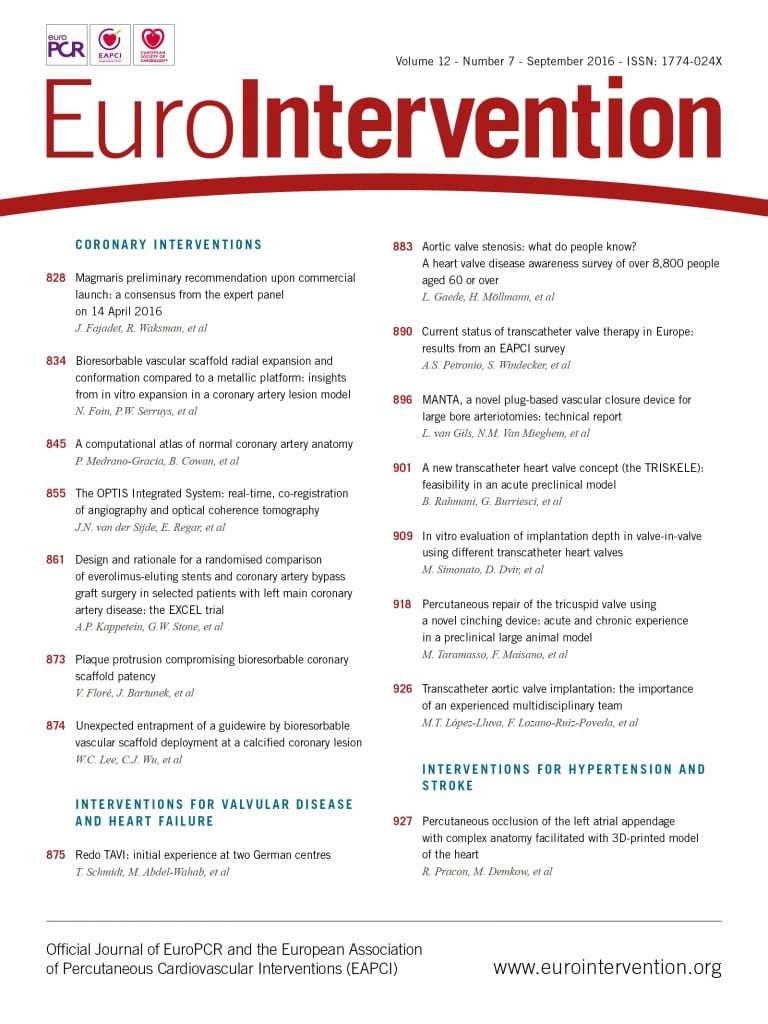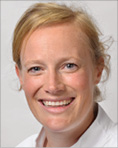
Abstract
Aims: Little is known about the level of public knowledge and concern towards aortic valve disease. Therefore, a survey was conducted to evaluate the awareness of the general population regarding different diseases with special emphasis on aortic stenosis (AS).
Methods and results: A total of 8,860 people aged 60 years or older in nine European countries took part in the survey. Cancer was the disease that respondents were most concerned about (27.5%), while only 1.7% were most concerned about heart valve disease. Seventeen percent (17%) of survey participants claimed to be familiar with heart valve disease, yet only 7% could correctly identify AS; 44.3% of respondents knew the correct number of valves in the human heart. After providing some general information about AS, 41.1% of respondents then said they were more concerned about the condition; 4.5% even recognised the symptoms in themselves. Over half of the respondents (54.2%) claimed that their general practitioners only rarely or never use the stethoscope to check their heart, which may eventually lead to an underdiagnosis of AS.
Conclusions: Despite its high prevalence, high morbidity and mortality, as well as good treatment options, the vast majority of respondents were neither concerned nor fully aware of AS.
Introduction
A stenosis of the aortic valve obstructs the left ventricular outflow leading to pressure overload-induced left ventricular hypertrophy, exercise intolerance and heart failure. The public health burden of heart valve disease in general increases with age, affecting more than 13% of the population aged >75 years with moderate or severe valvular heart disease1. Among acquired valvular heart diseases, degenerative aortic valve stenosis (AS) is the most common in adults2. Its prevalence is 2-7% in patients older than 65 years1,3. The number of patients with severe AS is growing steadily due to the relationship between degenerative valve disease and increasing life expectancy. In Scotland, for example, the incidence of aortic valve stenosis doubled over a period of eight years, mainly because of a growing number of patients older than 80 years2. After the onset of symptoms, untreated patients usually require repeated hospitalisation4,5.
Left untreated, patients with symptomatic severe AS show an average survival of only 50% within five years and 50% within two years in case of concomitant heart failure6. Consistent survival rates have been reported in contemporary series2,7,8.
AS, therefore, is one of the most life-threatening chronic diseases, highlighting the importance of both regular preventative medical check-ups and specific treatment to reduce hospitalisations.
Nonetheless, little is known about awareness of this disease in the general population. We sought to conduct an international survey to evaluate current awareness levels of this disease in relation to other illnesses among the population aged 60 or over.
Methods
In total, 8,860 people aged 60 years or over in nine European countries participated in the 2015 heart valve disease awareness survey. This included 500 Austrian, 501 Danish, 1,000 French, 1,446 German, 1,000 Italian, 1,000 Dutch, 1,000 Spanish, 1,002 Swedish and 1,411 UK-based respondents. The results were summarised by region as follows: northern Europe, comprising Denmark, Sweden and United Kingdom; middle Europe, comprising Austria, France, Germany and The Netherlands; and southern Europe, comprising Spain and Italy. An online methodology was utilised for all territories.
Regarding the age groups, in total 3,513 of the interviewees were 60-64 years, 2,944 between 65-69 years, 1,597 between 70-74 years, 592 between 75-79 years and 214 >80 years. The global online panels were actively managed and recruited for market research purposes. All member panellists went through a double opt-in process and agreed to participate to provide honest opinions for market research studies.
For each survey, panellists were sent an invitation to participate via email; invitations were sent on a random basis within the target groups. Each invitation reiterated the terms and conditions for the research, including the potential use by the researchers of the information provided. Participants were reminded that personal identity and other personally identifiable details of the respondents would be protected.
The survey adheres to the MRS Code of Conduct in the UK. Within these parameters, guidelines ensure that all research is carried out in a professional and ethical manner. The survey was also fully compliant and in accordance with the Data Protection Act.
The 2015 heart valve disease awareness survey was conducted by Opinion Matters and funded by Edwards Lifesciences with the research undertaken from September to October 2015. As members of ESOMAR and AIMRI, Opinion Matters abides by the ICC/ESOMAR International Code on Market and Social Research. Opinion Matters is registered with the Information Commissioner’s Office and is also certified under Quality Assurance Scheme IS0 9001.
The survey contained six questions, four with a single possible response (questions 1, 3, 4, 5), and two with a multiple response possible (questions 2, 6).
1. Which of the following health conditions concerns you most?
2. Which of the following heart conditions are you most familiar with?
3. When you visit your general practitioner (GP), how often does he/she check your heart with a stethoscope?
4. How many heart valves does the human heart have?
5. Do you know what “aortic stenosis” is?
After Question 5, background information on aortic valve stenosis was provided before the final question. The background information read as follows: “The heart valve disease, aortic stenosis, is the narrowing of the aortic valve opening, which limits the amount of blood flow from the heart. It is characterised by the accumulation of calcium deposits on the valve leaflets. Symptoms include chest pain, fatigue, shortness of breath, light-headedness and fainting. Once severe symptoms develop, it is life-threatening. The primary treatment is heart valve replacement. This can alleviate symptoms, prolong a patient’s life span and improve health and quality of life. Aortic stenosis affects up to 7% of the population over 65”.
6. Taking into account the above information about aortic stenosis, are you more concerned about the disease and, if so, what will you do as a result?
Subgroup analyses were performed taking into consideration age, gender and geographic differences between northern, middle and southern Europe.
Statistical analysis
The Kolmogorov-Smirnov test was used to assess for normal distribution. Pearson’s chi-squared test was performed for categorical variables with nominal scales. Yates’ chi-squared test was performed if necessary for correction of continuity.
Results
In total, 8,860 (male: 60.2%; n=5,338) people aged at least 60 years old from nine European countries took part in the 2015 heart valve disease awareness survey.
Participants were asked six questions concerning their knowledge and concern about various illnesses, with a focus on the human heart and heart disease.
Q1. Which of the following health conditions concerns you most?
The disease with the highest level of concern among respondents was found to be cancer (27.5%) followed by Alzheimer’s disease (24.7%), stroke (12.4%), heart attack (9.0%), diabetes (4.7%), arthritis (2.9%) and respiratory disease (2.8%). Only 1.7% of respondents were “most concerned” about heart valve disease (Figure 1).
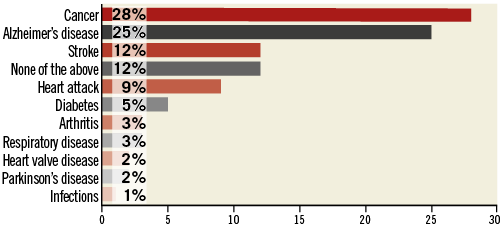
Figure 1. Q1: Which of the following health conditions concerns you most?
Women were more concerned about Alzheimer’s disease (28.7% vs. 22.0%; p<0.01), stroke (13.4% vs. 11.8%, p=0.03) and arthritis (3.5% vs. 2.5%; p=0.004), whereas men were more concerned about cancer (28.0% vs. 26.7%; p=0.2), heart attack (10.4% vs. 6.8%; p<0.0001) and diabetes (5.8% vs. 3.1%; p<0.0001).
Concern about cancer fell with increasing age. Whereas 28.6% of respondents aged 60-64 years were “most concerned” about cancer, this dropped numerically to 24.3% among those aged 80 years or older (p=0.12). The same held true for concern about suffering from heart attack (60-64 years: 9.9% vs. 80+ years: 6.1%; p=0.05). There was also a similar trend for concern about Alzheimer’s disease (60-64 years: 24.3% vs. 80+ years: 20.1%; p=0.48). By contrast, anxiety about respiratory diseases (60-64 years: 2.8% vs. 80+ years: 6.1%; p=0.02) increased with age.
An age-dependent difference could also be observed in the group which was “most concerned” about heart valve disease. Whereas only 1.4% of respondents aged 70-74 years were most concerned about heart valve disease, 3.0% of respondents aged 75-79 saw valvular conditions as their biggest concern.
Answers also differed according to geographical distribution. While in southern Europe respondents appear more concerned about cancer (29.0% vs. 26.7% in middle Europe and 27.5% in northern Europe; p<0.01) and Alzheimer’s disease (28.9% vs. 25.5% in middle Europe, and 20.7% in northern Europe; p<0.01), people in middle European countries tend to be more concerned about heart valve disease (2.0% vs. 1.6% in northern Europe, and 1.3% in southern Europe; p<0.01).
Q2. Which of the following heart conditions are you most familiar with?
People stated they were most familiar with heart attack (48.4%) followed by arrhythmia (32.5%), coronary heart disease (32.4%) and angina (31.1%). Only 10.4% of the survey participants believed themselves to be familiar with all common heart diseases. In total, 25.0% said they were not familiar with any common heart disease, and only 17.1% claimed to be familiar with heart valve disease.
Men and women were nearly equally familiar with heart attack (48.8% vs. 47.8%; p=0.39) and coronary heart disease (32.4% vs. 32.3%; p=0.59), but women were less informed about arrhythmia (36.9% vs. 29.6%; p<0.01).
Younger patients proved more likely to feel informed about heart diseases including heart attack (60-64 years: 51.5% vs. 80+ years: 40.7%; p=0.02) and sudden cardiac death (60-64 years: 20.9% vs. 80+ years: 16.8%; p=0.15). Older patients were more familiar with heart valve disease (80+ years: 24.7% vs. 60-64 years: 16.4%; p<0.01) (Figure 2).
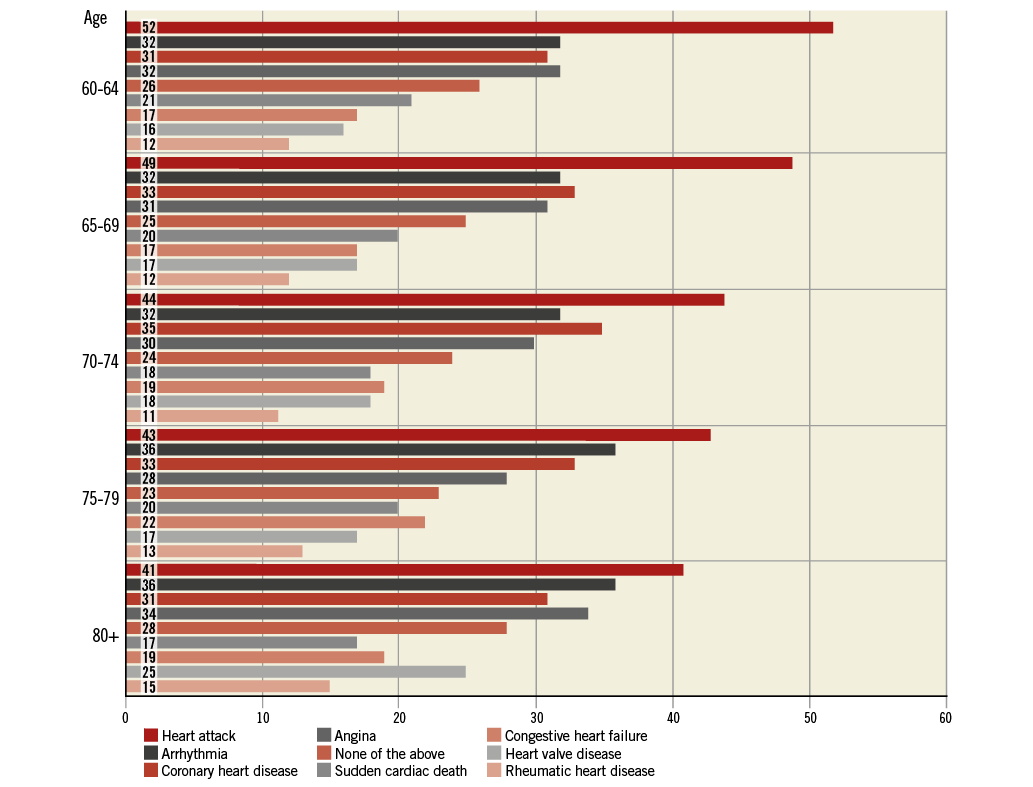
Figure 2. Q2: Which of the following heart conditions are you most familiar with? Differences between age groups.
People in southern Europe seem to be more informed about heart diseases, with only 17.5% unfamiliar with any of the conditions listed (vs. 20.1% in northern, and 32.3% in middle Europe). In southern Europe, 58.4% claimed to be familiar with heart attack, while only 23.4% stated they were familiar with coronary heart disease (CHD). This gap was similarly evident in middle Europe (heart attack 42.3% vs. CHD 24.2%) but did not exist in northern Europe (heart attack 49.9% vs. CHD 49.6%). Northern Europeans believed themselves to be more familiar with heart valve disease in general (northern 21.1% vs. middle 14.6% vs. southern 16.1%).
Q3. When you visit your GP, how often does he/she check your heart with a stethoscope?
A total of 38% of survey respondents claimed that their GP uses a stethoscope only rarely.
Specifically, they claimed that in only 24% of cases does their GP use a stethoscope on every visit; 8% claimed a stethoscope was used every second visit, and 10% every third visit or less; 16% claimed that their GP never uses a stethoscope.
Women appear to be checked less frequently with a stethoscope than men (p<0.01). Only 19.8% of the women surveyed reported auscultation of the heart on every visit (vs. 27.4% for men) and 20.1% of women say they are never checked with a stethoscope (vs. 13.1% for men) (Figure 3).

Figure 3. Q3: When you visit your general practitioner, how often does he/she check your heart with a stethoscope? Differences between genders.
There were significant differences within Europe regarding the frequency of auscultation of the heart by a GP (p<0.01). In middle Europe, it was reported that people’s hearts are auscultated more frequently: 31% of respondents said they were checked with a stethoscope on every visit (vs. 21.3% in northern and 16.0% in southern Europe), 34% said they were checked only rarely (vs. 40.6% in northern and 43.8% in southern Europe), while 14% claimed they are never checked (vs. 17.1% in northern and 17.6% in southern Europe).
Q4. How many heart valves does the human heart have?
Most respondents believed (incorrectly) that the human heart has two valves (47.3%); 44.3% provided the correct answer of four valves. Regarding other answers, 0.7% thought that the human heart has no valves, 2.1% believe it has one, 2.7% three, 0.7% five, while 2.2% thought the heart has more than five valves.
The correct answer was identified better by men than women (47.4% vs. 39.8%, respectively; p<0.01). There was also a marked difference between northern Europe (52.4%), southern Europe (47.9%), and middle Europe (36.6%; p<0.01).
The elderly appear to be less informed about the human heart and heart valve anatomy than younger groups (correct answer: 80+ years 34.1%, vs. 60-64 years 45.5%; p=0.02).
Q5. Do you know what “aortic stenosis” is?
A total of 68.9% of those surveyed did not know anything about AS; 23.9% believed they knew about the disease but were subsequently unable to provide an adequate description. Only 7.2% knew the disease and could provide a sufficient explanation (Figure 4).
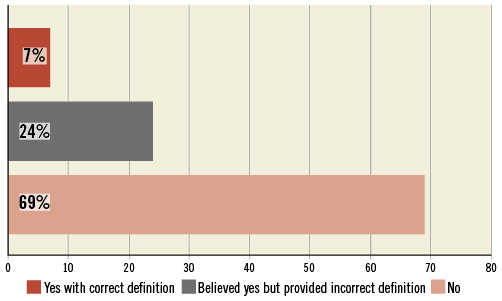
Figure 4. Q5: Do you know what “aortic stenosis” is?
Women demonstrated higher knowledge about AS than men (“yes” with correct definition: 8.3% vs. 6.5%, respectively, p<0.01). Younger groups also appear to be better informed (“yes” with correct definition: 60-64 years: 7.7% vs. 80+years 4.2%). From a geographic perspective, middle Europe performed strongest, with 10% of respondents giving the correct definition (vs. 7.4% in southern Europe and just 3.4% in northern Europe; p<0.01).
Q6. Taking into account the above information about aortic stenosis, are you more concerned about the disease and, if so, what will you do as a result?
After learning basic information about AS, the majority of respondents (45.9%) were still not more concerned. However, 24.2% were more concerned and were willing to seek more information; 16.9% said they were more concerned but did not plan to take further action; 4.5% were more concerned and claimed they recognised the symptoms of AS in themselves.
Whereas men were generally less concerned than women (“not more concerned” 47.2% for men vs. 44.0% for women, p=0.002), the additional information on AS is expected to lead more women to seek additional advice (“more concerned and will seek more information” 26.1% for women vs. 23% for men).
After learning more about AS, older respondents were more likely still to be “not more concerned” (80+ years: 52.3% vs. 60-64 years: 43.7%; p=0.02). The 70-74-year-old age group was most likely to be “already aware” of the disease (10.5%), with this percentage decreasing on either side of this age group; nevertheless, there was no significance in the awareness with respect to the age (down to 8.7% for those aged 60-64 years, and down to 9.8% for those aged 80+ years, p=0.31). Older respondents were less likely to be more concerned and to plan to seek more information on AS (80+ years: 16.8% vs. 60-64 years: 27.0%; p=0.001). A greater percentage of the older group, though not significant, was more concerned and recognised the symptoms of AS in themselves (80+ years: 6.1% vs. 60-64 years: 4.9%; p=0.15).
Taking into account all answers suggesting a higher concern after the additional information, in southern Europe respondents were more concerned than other geographical groups after learning about AS (48.8% vs. 48.2% in northern Europe, and 40.1% in middle Europe; p<0.01). Correspondingly, a larger proportion of southern Europeans were more concerned and also planned to seek further information about AS after completing the survey (35.8% vs. 21.5% in northern Europe, and 20.4% in middle Europe; p<0.01) (Table 1).
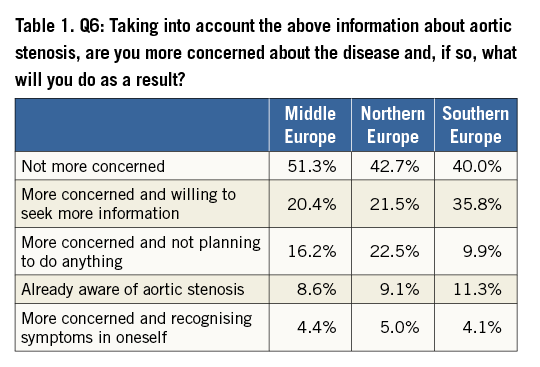
Discussion
The 2015 heart valve disease awareness survey sheds light on the level of concern and knowledge about different diseases in Europe, with a special focus on aortic valve disease. The results of this survey of 8,860 people show the following. 1) Within Europe, people are most concerned about non-cardiac diseases such as cancer or neurological entities. 2) The level of knowledge and concern about heart valve disease, especially AS, within the general population in Europe is poor. 3) Respondents claim that GPs rarely check their hearts with a stethoscope, potentially resulting in a missing diagnosis of AS.
The diseases that concerned people the most in this survey were cancer and Alzheimer’s disease. With increasing age, people are more concerned about specific diseases rather than about abstract malign or neurological diseases, possibly due to their own similar medical conditions, or those of relatives or friends of the same age.
Older groups are better informed and more concerned about heart valve disease, reflecting the higher prevalence of valve disease in older age. In total, however, less than 2% of the survey respondents were “most concerned” about heart valve disease. This is despite the fact that mortality of untreated severe AS is considerably higher than most cancers or conditions caused by Alzheimer’s disease6,9,10.
The level of knowledge about AS within the general European population 60+ as presented by this survey is low. The number of cases of heart valve disease, and therefore of AS as the most common acquired valvular disease, is increasing rapidly due to higher life expectation1. Nonetheless, most respondents were more familiar with heart attack. Fewer than one in ten respondents were appropriately informed about aortic valve stenosis. Furthermore, a considerably higher number of people who thought they knew about AS were eventually unable to provide the correct description.
Sufficient knowledge about both health and illness results in higher patient satisfaction11. Accordingly, the majority of respondents were willing to seek more information for themselves after receiving a small amount of information about aortic valve stenosis, demonstrating the need for easily accessible facts. Sufficient knowledge also results in greater awareness, as witnessed by the fact that almost half of the respondents were more concerned about AS after they received additional information about it. Moreover, after absorbing the additional information, nearly one in 20 of those surveyed recognised the typical symptoms of AS in themselves. Prevention, early detection and therapy are known to reduce the mortality of life-threatening diseases9. Without awareness or knowledge about the common symptoms, potential severity of a disease, or existing treatment options, patients are not likely to consult a GP or sign up for regular check-ups.
The urgent need for improved awareness of AS does not only apply to patients themselves but may be even more relevant for GPs. Awareness on the part of GPs is indispensable in the light of their key role for a timely therapy of AS. Given the reported rare use of stethoscope examination in people 60+ years of age by GPs, a diagnosis of AS could easily be missed. This holds true for patients who are denying symptoms, and to a lesser extent for asymptomatic patients5,12,13. In these patients, the characteristic systolic murmur might be the only or at least the first indication of AS. Auscultation of the heart should therefore be absolutely mandatory even during a routine GP check-up, especially in older people14. As the progression of the degeneration of the valve and the duration of the asymptomatic phase vary widely between individuals15, European guidelines recommend a re-evaluation of these patients by a specialist every six months, checking for symptoms, risk factors and exercise function, as well as for left ventricular function in order to provide best treatment14,15. Surgical valve replacement represents the gold standard treatment of symptomatic patients with severe AS. In the last decade, the possibility of transcatheter aortic valve implantation (TAVI) to treat elderly and higher-risk patients has shown promising one-year and five-year results7,8,16-20, leading to a lower number of untreated patients and therefore reduced mortality21. Randomised studies such as the PARTNER trial have served already as a basis for new guidelines established in 2012 by the surgical and cardiology communities7,8,14. The recently published PARTNER II trial comparing surgical aortic valve replacement and TAVI showed no inferiority of TAVI procedure even for patients at intermediate surgical risk22.
The reported rare use of stethoscope examinations indicates that GPs might either be unaware of the high incidence of AS among older people, unaware of the necessity of early diagnosis and regular monitoring, and/or be unaware of the effective treatment options that currently exist. Additionally, support in care coordination by GPs has been shown not only to result in higher patient satisfaction, but also to result in the earlier choice of the appropriate therapy9,11. GPs should therefore be especially informed about the necessity of an early and adequate diagnosis of AS to guarantee their support in paving the way for early therapy.
Limitations of the survey
The 2015 heart valve disease awareness survey was only performed in Europe, but one may readily assume similar results if the survey had been undertaken across other areas of the developed world. In addition, respondents were pre-selected based on their agreement to participate in such surveys, which may have resulted in an unpredictable bias. Regarding the age distribution, respondents were all 60 years of age or older. Most of them were in the age group 60-64 and only a few in the age group 80 years or older, this being the age group most affected by aortic valve stenosis. This may be due to the fact that elderly people typically have a higher threshold to participate in online surveys. In the era of smartphones and widespread multimedia content, it appears logical that younger respondents might be better informed about certain health conditions. Nonetheless, the large number of respondents may overcome the latter limitations.
Conclusion
Despite its high prevalence, high morbidity and mortality, there is little concern and limited awareness of heart valve disease among the general population 60 years or older in Europe. In addition to the need to inform the general public, it appears of utmost importance to focus on awareness campaigns for GPs to guarantee early diagnosis and timely treatment of AS in order to reduce unnecessary hospitalisations and deaths.
| Impact on daily practice This survey shows an alarming lack of awareness and concern regarding aortic valve stenosis within the general population but also among general practitioners all over Europe. This may lead to underdiagnosis of aortic valve stenosis despite well established treatment modalities with surgical or transcatheter aortic valve replacement. There is an urgent need for information campaigns aimed at the general public as well as at general practitioners to guarantee early diagnosis and timely treatment of aortic valve stenosis. |
Acknowledgements
The 2015 Heart Valve Disease Awareness Survey was conducted by Opinion Matters and funded by Edwards Lifesciences.
Conflict of interest statement
B. Iung is a consultant for Boehringer Ingelheim, and has received a speaker’s fee from Edwards Lifesciences. H. Möllmann has received speaker’s honoraria from Edwards Lifesciences, and proctor and speaker’s honoraria from St. Jude Medical and Symetis SA. The other authors have no conflicts of interest to declare.
